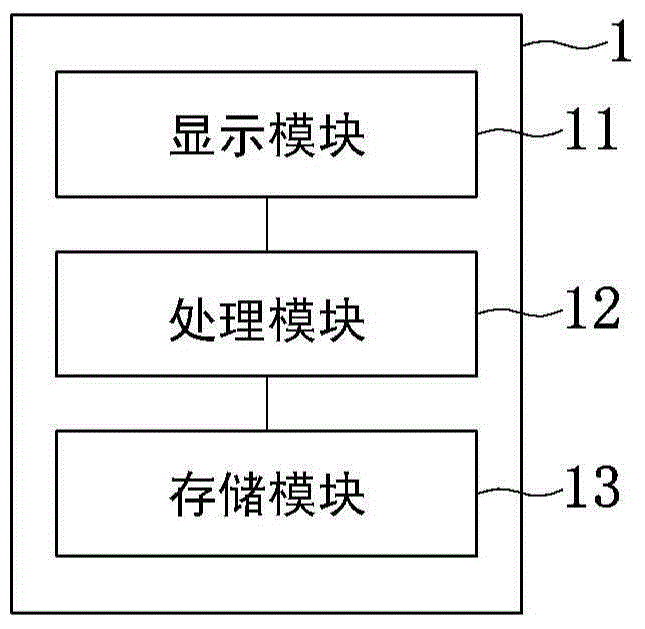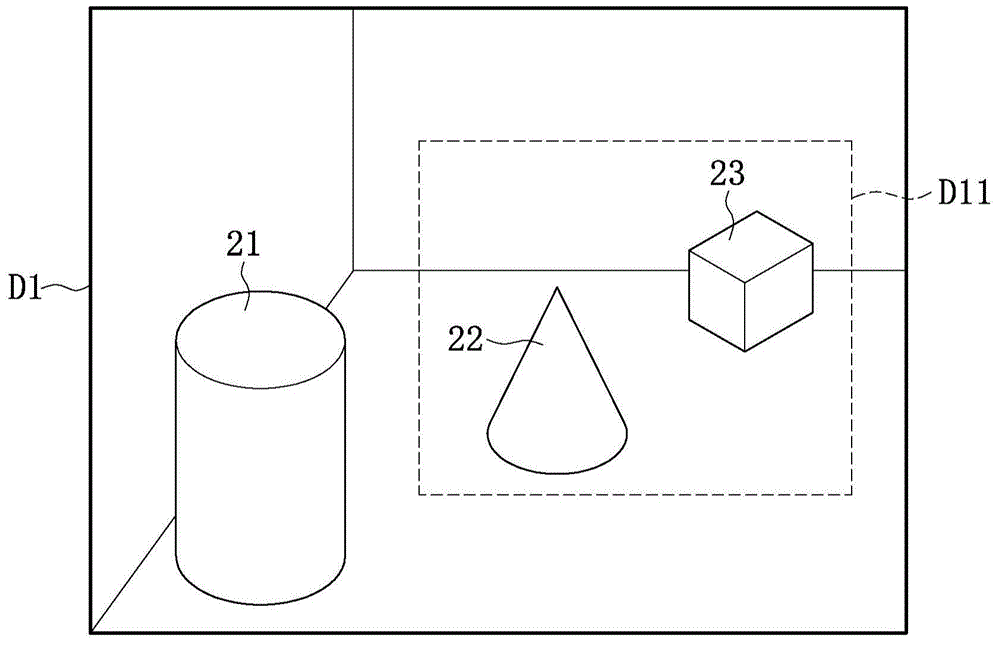Image processing method and electronic device
A technology of image processing and electronic devices, applied in image communication, electrical components, editing/combining graphics or text, etc., can solve problems such as dizziness and eye fatigue, and achieve the effect of simple cost
- Summary
- Abstract
- Description
- Claims
- Application Information
AI Technical Summary
Problems solved by technology
Method used
Image
Examples
Embodiment 1
[0042] Please also refer to Figure 1 to Figure 3 , image 3 is the first composite image according to an embodiment of the present invention. Assuming that the user selects the object 21 (which can be regarded as a target object), the processing module 12 will capture the object 21 from the panoramic depth map D1 according to the depth map corresponding to the panoramic depth map D1, and zoom in on the captured object 21. Item 21. Next, the processing module 12 uses the depth-of-view image D1 as a background image to sequentially superimpose the frame image W and the enlarged object 21, thereby generating image 3 The composite image D2 shown is used to highlight the object 21 to achieve a three-dimensional effect.
Embodiment 2
[0044] Please also refer to figure 1 , figure 2 and Figure 4 , Figure 4 is the second composite image according to an embodiment of the present invention. Assuming that the user selects the object 22 (which can be regarded as a target object), the processing module 12 retrieves the object 22 from the full depth map D1 according to the depth map corresponding to the full full depth map D1. In addition, the processing module 12 also captures partial images including the object 22 and the object 23 in the depth-of-view map D1, that is, the processing module 12 captures the image D11 from the depth-of-view map D1 (such as figure 2 shown). Next, the processing module 12 zooms in on the captured object 22, and uses the image D11 as a background image to sequentially superimpose the frame image W and the enlarged object 22, thereby generating the following: Figure 4 The composite image D3 shown is used to highlight the object 22 to achieve a three-dimensional effect.
[00...
Embodiment 3
[0047] In this embodiment, the user can select a reference depth value through the icons displayed on the display module 11 . Please refer again Figure 1 to Figure 3 , assuming that the depth values of object 21, object 22, and object 23 are 20, 100, and 200 respectively, and assuming that the reference depth value selected by the user is 50, the processing module 12 will combine the reference depth value with object 21, object 22, and object 23 to determine that the depth value of the object 21 is smaller than the reference depth value. Next, the processing module 12 extracts an object 21 (which can be regarded as a target object) whose depth value is smaller than the reference depth value from the panoramic depth map D1 according to the depth map corresponding to the panoramic depth map D1, and enlarges the captured object 21 . Next, the processing module 12 uses the depth-of-view image D1 as a background image to sequentially superimpose the frame image W and the enlar...
PUM
 Login to View More
Login to View More Abstract
Description
Claims
Application Information
 Login to View More
Login to View More - R&D
- Intellectual Property
- Life Sciences
- Materials
- Tech Scout
- Unparalleled Data Quality
- Higher Quality Content
- 60% Fewer Hallucinations
Browse by: Latest US Patents, China's latest patents, Technical Efficacy Thesaurus, Application Domain, Technology Topic, Popular Technical Reports.
© 2025 PatSnap. All rights reserved.Legal|Privacy policy|Modern Slavery Act Transparency Statement|Sitemap|About US| Contact US: help@patsnap.com



